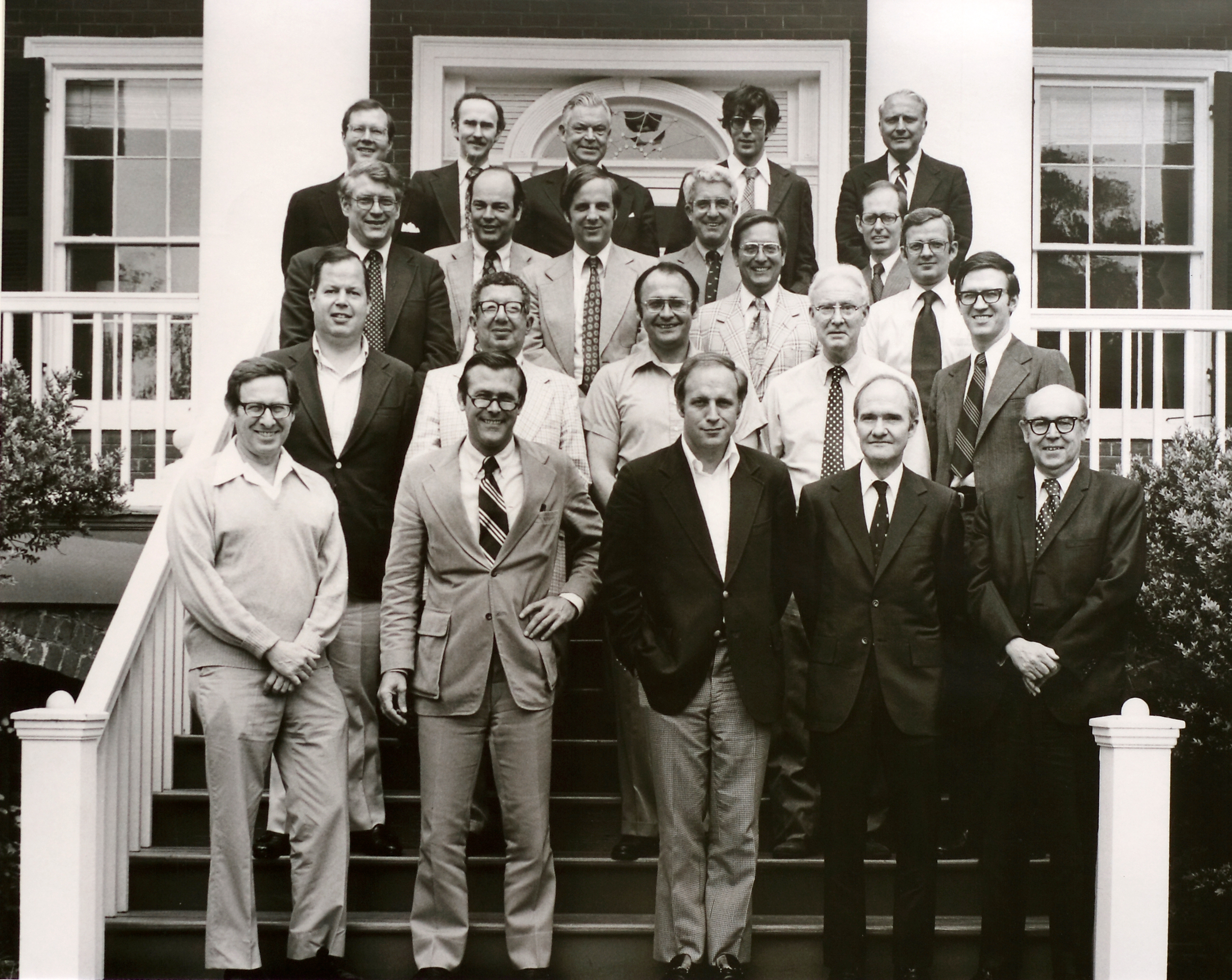Righting the ship of state
The newly released Gerald Ford oral history illuminates the post-Watergate presidency
What would it have been like to be in a room with Dick Cheney, Don Rumsfeld, or Brent Scowcroft in April 1977? We tend to think of these three senior foreign policy leaders as having served in the presidencies of George H. W. Bush and George W. Bush. But they first worked with one another in the administrations of Richard Nixon and Gerald Ford. Thanks to the digital release of the very first Miller Center presidential oral history, their early tour of duty together is now available to a wide audience.
Not long after Jimmy Carter’s narrow victory in the 1976 presidential election and his subsequent inauguration, a group of top Ford White House staff and University of Virginia scholars gathered for a daylong symposium at the newly formed White Burkett Miller Center of Public Affairs. The purpose was to discuss the recent past—the presidential successes and failures of the 38th president, Gerald R. Ford.
Not long after Jimmy Carter’s narrow victory in the 1976 presidential election and his subsequent inauguration, a group of top Ford White House staff and University of Virginia scholars gathered for a daylong symposium at the newly formed White Burkett Miller Center of Public Affairs
In three sessions, held April 23, 1977, some of Ford’s most senior staffers discussed the exceptional circumstances and administrative challenges of Ford’s presidency. The conversations were recorded but not published or made publicly available for almost a decade, in part because the Miller Center did not have an official oral history program. When James Sterling Young (the founder and longtime chairman of the Miller Center’s Presidential Oral History Program) came on the scene a few years later, the three conversations about Ford’s presidency were edited into a book, The Ford White House, published in 1986.
Even so, the Miller Center’s first oral history remained in a kind of black box—secure inside its book covers but available on the shelves of only a few libraries. The Center’s Presidential Oral History Program has now made the long out-of-print book available to the public as a comprehensive online resource about Gerald Ford, rounding out the original printed material with newly released comments from three participants.

In the first two sessions, participants conduct a frank assessment of the abrupt transition period between Nixon and Ford and note key distinctions between the two presidential approaches to decision-making. Different views are aired about how Ford managed the challenge of creating a unified governing coalition among diverse, often competing constituencies within the executive branch.
In the first two sessions, participants conduct a frank assessment of the abrupt transition period between Nixon and Ford and note key distinctions between the two presidential approaches to decision-making
Russell Riley, the current co-chair of the Center’s Presidential Oral History Program, comments that “for the most part, these conversations are White House insiders talking shop about their operating procedures and technical problems getting the work done. That’s catnip for political scholars, attentive journalists, and other readers too.”
The topics in the third session resonate into our current political moment. Candid queries about presidential imperialism and presidential–congressional relations are met with reflections on the growing importance of media messaging, and even future Vice President Dick Cheney’s views on the largely ineffectual role of the vice president. Jeni Crockett-Holme, editor of the Presidential Oral History Program, remarks that “reading these conversations with the knowledge of everything that’s happened in almost 50 years since is kind of extraordinary.”
The topics in the third session resonate into our current political moment
Herbert Storing, a University of Virginia professor of government and, at the time, the newly appointed director of the Center’s Program on the Presidency, moderated the conversations and concluded the final discussion this way: “At some points in the conversation one wonders how on earth the American government system works at all, and why it does such a reasonably good job, given all the problems that seem to be built into it. Part of the answer, I think it’s fair to say, is the quality of an awful lot of the people who work in it, including many of those sitting around this table.”
An excerpt from the Gerald Ford Oral History: Donald Rumsfeld on Ford's complicated balancing act
Ford was well known and well respected by his peers on both sides of the aisle on Capitol Hill. He served almost 25 years as a U.S. representative from Michigan before Nixon chose him as vice president to replace Spiro Agnew. Ford’s predicament was to set himself apart from the disgraced former president who had lifted him to power, while reassuring the American people that despite a historic disruption, our democratic traditions—and responsible and effective governance—would prevail.
In this passage from the first session of Gerald Ford Oral History, Donald Rumsfeld—who led Ford’s transition team and became his White House chief of staff and then secretary of defense—comments on Ford’s complicated balancing act.
Donald Rumsfeld: The problem he faced was one of trying to deal with basically two things at once. One was to provide a degree of continuity as the first president who wasn’t elected and came in abruptly, and to see that the government ran, that things worked this way. This was particularly important to foreign policy and national security affairs.
At the same time, he recognized the need for change. There was a need in the country for something other than what had been, as a result of the resignation. There obviously was, he felt, the desire to do those things that might contribute, along with the most important ingredient of time, to restoring the Executive Office of the President to a position of sufficient respect and trust that a leader, who has to lead by persuasion and consent, is able to function.